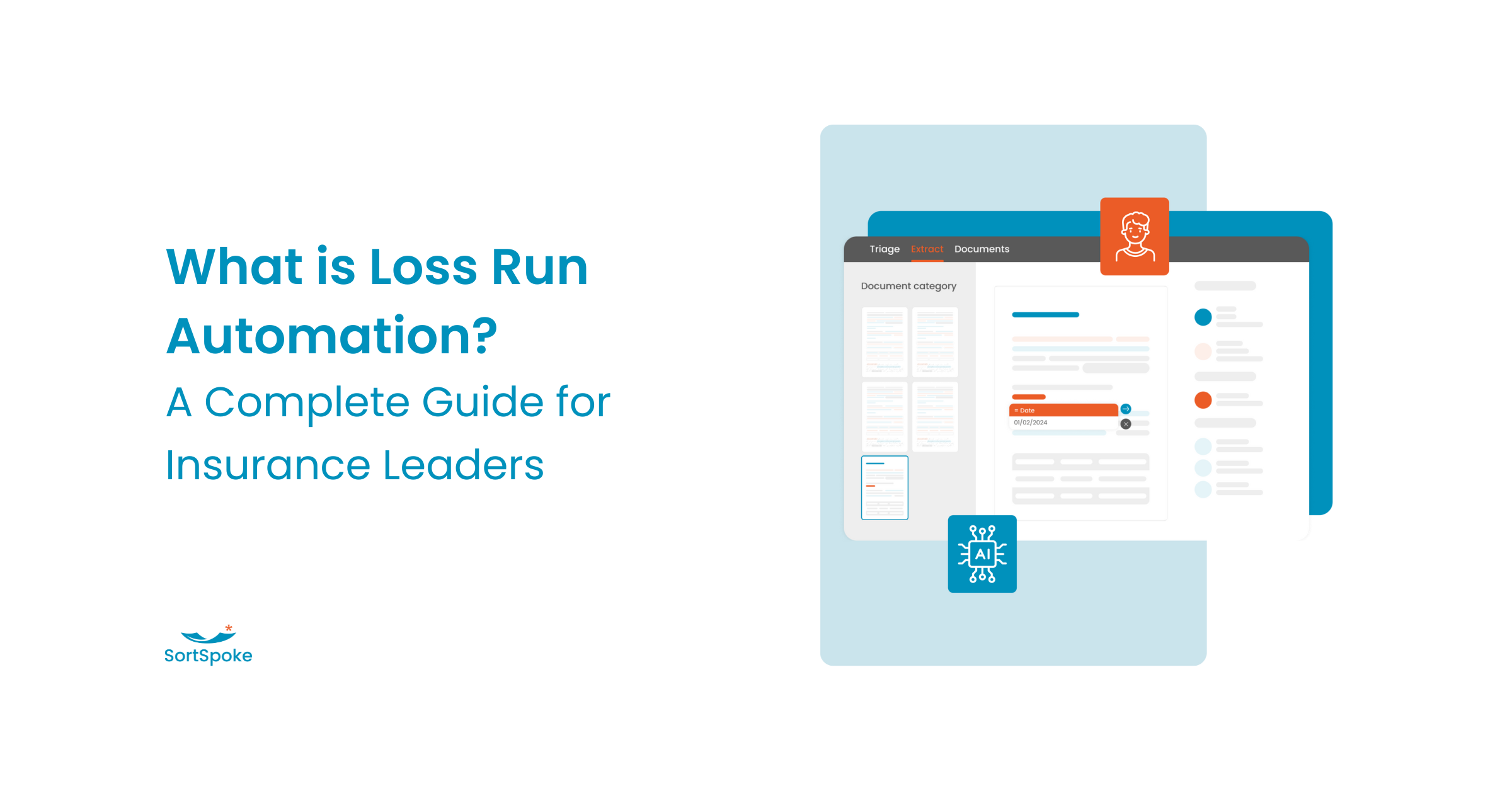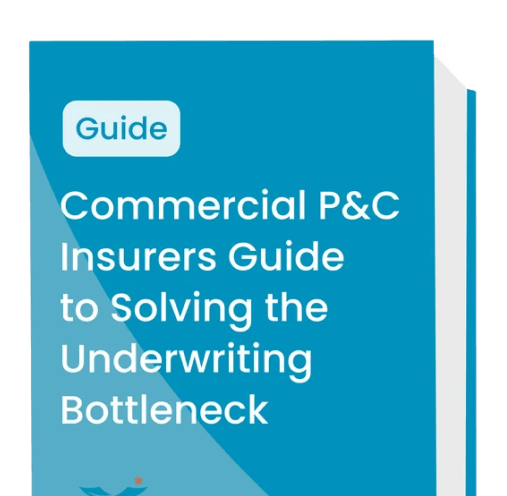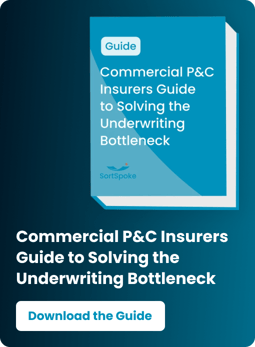| Approach | Strengths | Limitations |
|---|---|---|
| Manual processing (Onshore or Offshore) |
- Human expertise applies - No technology investment required - Adaptable to any document format |
- Extremely time-intensive - Slow turn around times - Difficult to scale - Manual review is error-prone |
| Traditional OCR | - Handles digital-native PDFs - Works with consistent formats - Simple to implement |
- Fails with varied document formats - Struggles with scanned documents - Requires template creation - No contextual understanding |
| Rules-Based Systems | - More flexible than pure OCR - Can handle some variation - Explainable logic |
- Requires extensive rule creation - Breaks when formats change - High maintenance cost - Limited adaptability |
| ML-Only Solutions | - Handles varied formats - Improves with more data - Adapts to new formats |
- May miss contextual nuances - Requires substantial training data - Limited explainability |
| LLM-Only Approaches | - Strong contextual understanding - Handles complex language - Flexible with formats |
- Potential hallucinations - Unpredictable extraction - Black-box decision making - Compliance concerns |
| Human-in-the-Loop AI | - Highest accuracy and reliability - Continuous improvement - Maintains underwriter control - Adaptable to all formats - Full auditability and compliance |
- Requires thoughtful implementation - Needs proper validation workflows - More sophisticated than basic OCR |

What is Loss Run Automation?
DEFINITION:
Loss run automation applies artificial intelligence, machine learning, and human validation processes to automatically extract, standardize, and analyze claim history data from insurance loss run reports.
This technology enables faster, more consistent underwriting decisions while maintaining accuracy and compliance.
Loss Run Automation: A Complete Guide for Insurance Leaders
In today's competitive insurance landscape, underwriters spend up to 40% of their time manually processing and analyzing loss runs – historical claim records that are critical for risk assessment and pricing decisions. This time-intensive process creates significant bottlenecks, especially as submission volumes increase and skilled underwriting talent becomes harder to find.
For insurance leaders looking to scale operations without proportionally increasing headcount, loss run automation presents a compelling opportunity. But what exactly is loss run automation, how does it work, and what benefits can you realistically expect? This comprehensive guide answers these questions and provides insights into this transformative technology.
TL;DR: Loss Run Automation Essentials
- Loss runs are critical underwriting documents containing historical claim data that directly impact risk assessment and pricing decisions
- Effective loss run automation combines ML, LLMs, and human validation, going beyond traditional OCR and rule-based approaches
- Human-in-the-loop validation is essential for ensuring accuracy, compliance, and maintaining underwriter control
- Benefits include 5X faster processing, standardized analysis, improved accuracy, and better resource allocation
- Loss run automation complements policy administration systems and underwriting workbenches as part of a modern tech stack
What Are Loss Runs?
DEFINITION:
Loss run reports, or Loss Runs, are detailed reports documenting an insured's claim history over a specific period (typically 3–5 years), including claim dates, types, amounts paid, reserves, and current status.
Loss runs are provided by current or previous insurance carriers and are essential for underwriting new or renewal business.
Loss runs are historical claim records that provide detailed information about an insured's past losses. These documents serve as the foundation for underwriting decisions, helping insurers evaluate risk profiles, determine appropriate coverage terms, and set accurate premium rates.
While digital transformation has modernized many aspects of insurance operations, loss runs remain a critical component of the underwriting process. They provide the historical context needed to make informed decisions about future risk exposure.
Content and Structure
Loss runs typically contain the following information:
- Policy information (policy number, effective dates, name insured)
- Claim dates (date of loss, report date, closed date)
- Claim details (type, location, description)
- Financial information (paid amounts, reserved amounts, expenses)
- Claim status (open, closed, reopened)
- Claimant information (when applicable)

The challenge lies in the lack of standardization across the industry. Loss runs come in various formats depending on the carrier or third-party administrator (TPA) that produced them. They may arrive as PDFs, scanned documents, Excel spreadsheets, or even as images embedded in emails.
Loss Run Analysis Importance
The analysis of loss runs goes beyond simply extracting data points. Underwriters must identify patterns, frequency trends, severity indicators, and potential red flags that might indicate future risk. This analysis directly impacts:
- Premium pricing decisions
- Coverage terms and conditions
- Attachment points and retention levels
- Exclusion requirements
- Reinsurance considerations
Moreover, proper documentation of loss run analysis is increasingly important for regulatory compliance and audit purposes. Underwriters must be able to demonstrate that they thoroughly reviewed historical claims data when making decisions.
The Traditional Loss Run Processing Workflow
Manual Process Steps
The conventional approach to processing loss runs involves several manual steps:
Collecting loss runs from various sources and sorting them by submission. Underwriters often need to follow up with brokers for missing information or additional details.
Scanning documents to identify relevant information and determine whether they contain the necessary data for underwriting analysis.
Manually transcribing key data points from documents, often requiring careful attention to detail across multiple pages and tables.
Inputting extracted information into underwriting systems, which may involve copying data across multiple platforms.
Evaluating patterns, calculating loss ratios, and identifying trends that indicate risk levels and pricing considerations.
Developing loss summaries for decision-making that can be referred to by multiple stakeholders in the underwriting process.
Incorporating findings into the broader underwriting assessment and connecting loss run insights with other risk factors.
This process is not only time-consuming but also prone to inconsistency as different underwriters may extract and interpret information differently.
Time and Resource Requirements
The manual processing of loss runs consumes significant underwriting resources:
- Simple loss runs (1-3 pages) typically require 15-30 minutes to process
- Complex loss runs (multiple years, multiple entities) can take 1-3 hours
- Multi-carrier programs with loss runs from different sources may require 4+ hours

For a typical commercial lines carrier processing 1,000 submissions monthly, this translates to approximately 500-1,000 hours of underwriter time spent solely on loss run processing – time that could be better allocated to risk assessment, relationship building, and higher-value analytical work.
Limitations and Challenges
The traditional approach presents several challenges:
- Inconsistency: Different underwriters may extract different data points or interpret loss patterns differently
- Scalability issues: During high submission periods, backlogs form quickly
- Error potential: Manual data entry introduces transcription errors and omissions
- Inefficient talent utilization: Highly skilled underwriters spend time on administrative tasks
- Compliance risks: Manual processes may lack proper documentation for audit trails
- Knowledge transfer challenges: Experienced underwriters' expertise in analyzing loss patterns is difficult to systematize
Loss Run Automation Approaches
Core Components
Loss run automation uses technology to streamline the extraction, processing, and analysis of data from loss run documents. Unlike simple document digitization, comprehensive loss run automation addresses the full workflow from receipt to analysis.
A complete loss run automation solution includes:
- Document intake capabilities - Processing loss runs regardless of format or delivery method
- AI-powered data extraction - Identifying and capturing relevant information without templates
- Standardization mechanisms - Converting varied data formats into consistent, usable structures
- Human validation interfaces - Enabling underwriter review and correction of extracted data
- Analysis capabilities - Calculating key metrics and identifying patterns
- System integration - Connecting with policy administration and underwriting platforms
Technology Evolution
Loss run processing technology has evolved significantly:
- First generation: Manual extraction and data entry
- Second generation: Basic OCR with structured templates
- Third generation: Rules-based systems with pattern matching
- Current generation: ML and LLM-powered extraction with human-in-the-loop validation

Each evolution has addressed the limitations of previous approaches, with the current generation focusing on flexibility, accuracy, and maintaining underwriter control.
Automation Approaches Comparison
The most effective approach combines the strengths of machine learning, large language models, and human expertise while mitigating their individual limitations.
Benefits of Loss Run Automation
Efficiency Improvements
Loss run automation delivers significant time savings and throughput improvements:
- Processing speed increase: Automated extraction typically processes loss runs 5X faster than manual methods
- Submission throughput: Underwriters can handle more submissions in the same amount of time
- Consistency: Standard extraction regardless of document format or underwriter
- Queue management: Reduced backlogs during high-volume periods
For carriers processing thousands of submissions monthly, these efficiency gains translate directly to competitive advantage through faster quote turnaround and higher capacity.
Quality and Consistency
Beyond speed, automation improves the quality and reliability of loss run processing:
- Reduced error rates: AI-assisted extraction has lower error rates than manual transcription
- Standardized output: Consistent format regardless of input document structure
- Completeness checks: Validation of extracted data against expected fields
- Pattern recognition: Identification of trends that might be missed in manual review
These quality improvements lead to better underwriting decisions based on more accurate and complete historical loss data.

Strategic Business Impact
Loss run automation creates strategic advantages beyond tactical efficiency:
- Capacity scaling: Process more submissions without proportional headcount increases
- Underwriter focus: Shift skilled resources from data entry to analysis and relationship management
- Market responsiveness: Faster quote turnaround during competitive renewal periods
- Data consistency: Build more reliable loss trend data across the portfolio
- Talent attraction/retention: Eliminate tedious work that contributes to underwriter dissatisfaction
These benefits compound over time as the automated system continues to learn and improve from human feedback.
Compliance and Audit Benefits
Modern insurance operations face increasing regulatory scrutiny and documentation requirements. Loss run automation provides:
- Complete audit trails: Documentation of what was extracted, reviewed, and approved
- Consistency documentation: Evidence of standardized processing regardless of underwriter
- Version control: Clear tracking of document iterations and updates
- Review evidence: Timestamps and user tracking for compliance requirements
This documentation becomes increasingly valuable as regulatory requirements evolve and audits become more thorough.
Key Technologies Powering Modern Loss Run Automation
Machine Learning Foundations
Machine learning provides the foundation for identifying patterns and extracting structured data:
- Document classification: Automatically identifying document types and relevance
- Entity recognition: Locating key data points within varied document formats
- Pattern recognition: Identifying claim tables and financial information
- Layout understanding: Adapting to different document structures
ML models can be trained on insurance-specific documents to recognize industry terminology and common formats, providing a level of flexibility impossible with traditional OCR or rule-based systems.
Large Language Models (LLMs)
LLMs add contextual understanding and natural language processing capabilities:
- Contextual extraction: Understanding data meaning beyond position or format
- Terminology handling: Processing industry-specific language and abbreviations
- Inference capabilities: Deriving implied information from context
- Flexibility: Adapting to new document formats without retraining
This contextual understanding allows for more accurate extraction, especially when dealing with complex or non-standard loss run formats.
Human-in-the-Loop AI
The human element remains essential for quality, compliance, and continuous improvement:
- Validation workflows: User-friendly interfaces for reviewing and correcting extractions
- Confidence scoring: Highlighting uncertain extractions for focused review
- Exception handling: Processes for managing complex or unusual documents
- Feedback loops: Mechanisms for incorporating human corrections into future extractions
This collaborative approach between AI and underwriters ensures accuracy while continuously improving the system's performance.
The Future of Loss Run Processing
Enabled Teams Partnering with AI
The future of loss run automation is centered on underwriting teams partnering effectively with AI:
- Collaborative workflows: Underwriters and AI systems working together in complementary roles
- Decision augmentation: AI handling routine extraction while underwriters focus on complex analysis
- Continuous learning: Systems that improve based on underwriter feedback and corrections
- Adaptive partnerships: Technology that adjusts to individual underwriter preferences and strengths
- Knowledge enhancement: AI surfacing relevant insights while preserving underwriter expertise
These evolving partnerships will redefine underwriting workflows, combining the pattern recognition strengths of AI with the critical judgment and experience of skilled underwriters. Rather than replacing the human element, next-generation automation will enhance it, creating more powerful and effective underwriting teams.
The Path Forward
Loss run automation represents a critical capability for modern insurance organizations seeking to improve efficiency, maintain quality, and scale operations. By combining the best of AI technology with human expertise, insurers can transform a significant bottleneck into a strategic advantage.
The most successful implementations will:
- Leverage both ML and LLM capabilities
- Maintain human-in-the-loop validation
- Integrate seamlessly with existing workflows
- Focus on underwriter empowerment rather than replacement
- Continuously learn and improve
As submission volumes increase and skilled underwriting talent becomes scarcer, the ability to process loss runs efficiently while maintaining accuracy becomes not just an operational advantage but a competitive necessity.
Key Takeaways







